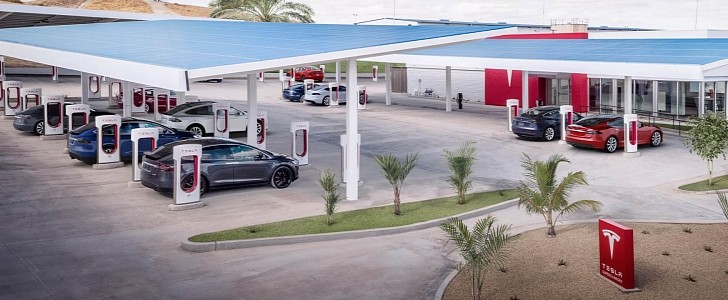A country with clear and respected rules can become a headache for a company that is actively trying to change how mobility is perceived. The German automotive industry is just making the first proper steps in the EV adoption field. Meanwhile, Tesla’s building all-electric cars and SUVs like there’s no tomorrow. But that doesn’t mean it won’t be subjected to local laws.
Fortunately, authorities aren’t rushing anywhere in this particular case. Here’s what’s happening and why the Supercharger network might have to go through some changes - eventually.
In the U.S. and most parts of the world, when someone’s pumping gas or diesel they can see how many gallons or liters are being put into the tank. This is possible thanks to the flow meter. To make sure nobody’s ever going to mess with it, calibration must be performed periodically.
This rule establishes that someone with authority in the metrology department must come and check the devices and certify that they work properly. Generally, these checks are done yearly, when a sensor needs replacing, or when a customer makes a complaint.
In Germany and the whole EU, rules are almost similar, and they apply to charging stations as well. They must be able to show you how many kWh are being sent to the vehicle and the measurement must be done by the station, not by the car. That’s why Tesla’s Supercharger network is breaking the law – they charge customers on a per-kWh basis and don’t have an interface that can display how many kWh the EV driver is getting.
Moreover, these charging stations must be calibrated by authorized personnel and the process should be repeated every year or after maintenance has been performed.
Called Preisangabenverordnung, this law has been enacted after the EU established energy companies must be transparent and provide means that allow customers to easily compare offers.
Tesla isn’t rushing to fix this legal issue because authorities like the Bavarian State Office for Weights and Measures aren’t forcing them to do so. They gave the automaker until the end of 2022 to comply with the law, but the term has recently been extended to the end of 2023, according to local media. One of the reasons for this compromise could be the fact that EV adoption must continue to grow until decarbonization targets are hit. Hindering or blocking charging stations could turn some people away from all-electric cars.
But Tesla and its 1,800 German chargers are not alone in this situation. Only some EV charging companies are compliant and tell customers how many kWh are being sent to their cars. Others, like Efacec or Delta, must go through a modification process until the end of 2023 as well.
For now, it looks like Tesla customers and other EV owners who charge at stations that do not have calibrated meters will have to put up with the situation and trust their cars’ measuring systems.
This rule establishes that someone with authority in the metrology department must come and check the devices and certify that they work properly. Generally, these checks are done yearly, when a sensor needs replacing, or when a customer makes a complaint.
In Germany and the whole EU, rules are almost similar, and they apply to charging stations as well. They must be able to show you how many kWh are being sent to the vehicle and the measurement must be done by the station, not by the car. That’s why Tesla’s Supercharger network is breaking the law – they charge customers on a per-kWh basis and don’t have an interface that can display how many kWh the EV driver is getting.
Moreover, these charging stations must be calibrated by authorized personnel and the process should be repeated every year or after maintenance has been performed.
Called Preisangabenverordnung, this law has been enacted after the EU established energy companies must be transparent and provide means that allow customers to easily compare offers.
Tesla isn’t rushing to fix this legal issue because authorities like the Bavarian State Office for Weights and Measures aren’t forcing them to do so. They gave the automaker until the end of 2022 to comply with the law, but the term has recently been extended to the end of 2023, according to local media. One of the reasons for this compromise could be the fact that EV adoption must continue to grow until decarbonization targets are hit. Hindering or blocking charging stations could turn some people away from all-electric cars.
But Tesla and its 1,800 German chargers are not alone in this situation. Only some EV charging companies are compliant and tell customers how many kWh are being sent to their cars. Others, like Efacec or Delta, must go through a modification process until the end of 2023 as well.
For now, it looks like Tesla customers and other EV owners who charge at stations that do not have calibrated meters will have to put up with the situation and trust their cars’ measuring systems.







